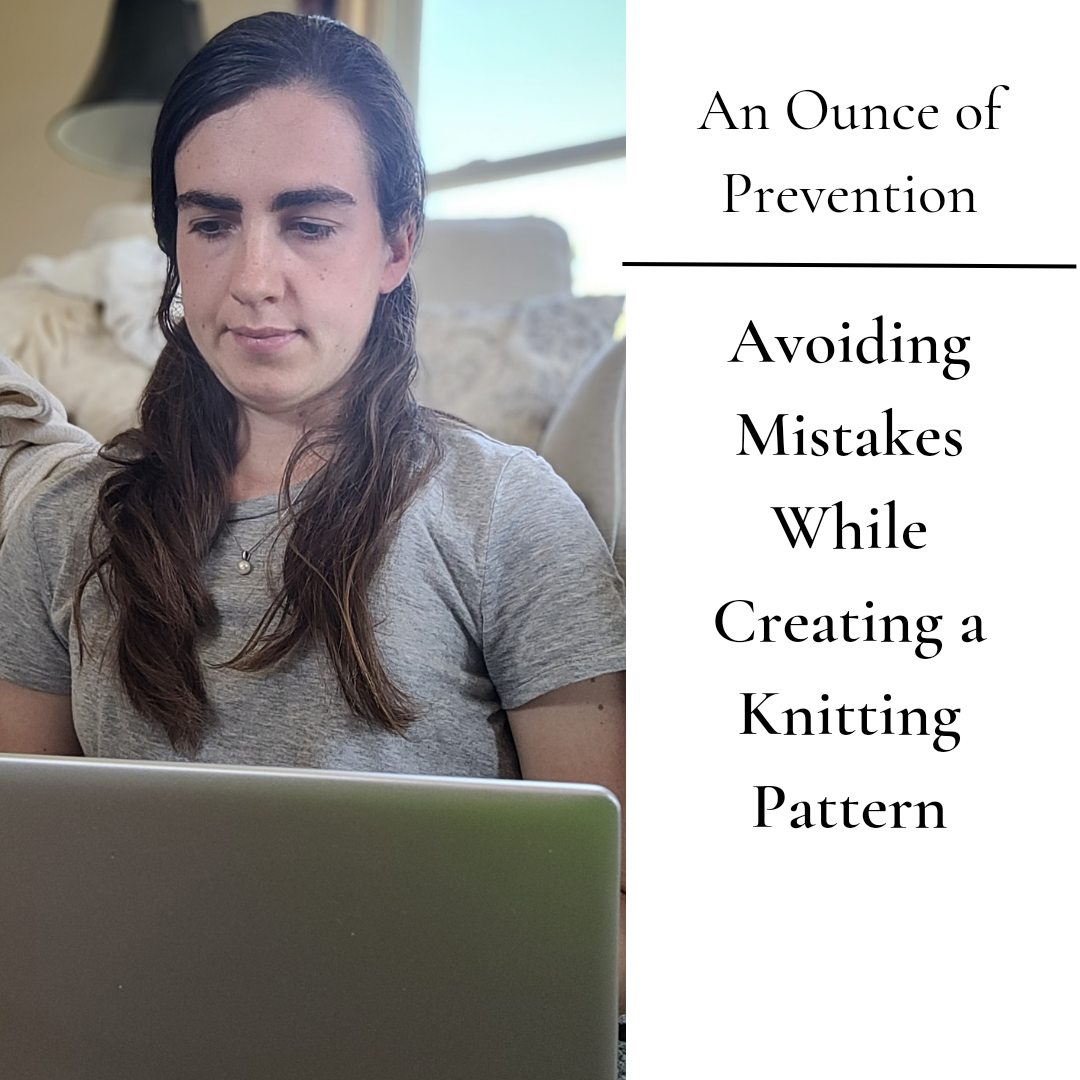Your cart is currently empty!

An Ounce of Prevention
Everyone makes mistakes including myself. Thankfully, I can learn from mistakes and work to prevent the likelihood of repeating that same mistakes. Here are practical ways I prevent mistakes in my knitting-related work.

“Of course I make mistakes. I’m human. If I didn’t make mistakes, I’d never learn. You can only go forward by making mistakes.”
– Alexander McQueen
Hello everyone!
I strive for my work to be perfect!
As much as I work to examine every single detail of a knitting pattern for any inaccuracy, I don’t always succeed.
Thankfully, these oversights can be great learning opportunities if you allow it!
Are you involved in the process of creating knitting patterns? How can you prevent mistakes from occurring on your part?
Below, I share 4 simple tips that I’ve found to be foundational in preventing mistakes.
Lists
Checklists, or an organizational system like Trello, that contain all the actions I must make when designing, grading, editing, etc. are extremely helpful for preventing mistakes.
From recording the right notes to writing the description when posting your pattern for sale, it’s quite easy to overlook an important detail.
Adding and updating your lists and systems as I make mistakes to improve for the future is important as well.
I have a Master Checklist for my tech editing process.
It includes all the parts of the pattern I need to check from the description to the finishing instructions. Each part has its own checklist. Under notions, I need to check that all tools from stitch markers to buttons are included in the pattern with the correct quantities.
This list is crucial to my process and helps me be effective and efficient with the editing time.
Also, I have a Trello Board that contains lists for every step of my editing process.
Trello allows me the ability to make cards for each pattern that I need to edit. This gives me a visual of the patterns I’m helping designers tech edit and what stage I’m at.
On Instagram, I have a highlight full of stories on how I use Trello to keep organized and avoid mistakes.
Teamwork
Natalie wrote a helpful article on the different roles that are filled to create a knitting pattern. Also, she included an informative and captivating Venn diagram to help explain.
Though one person can be the designer, grader, and tech editor of a pattern, it’s incredible what another informed eye can catch.
I believe test knitters deserve more credit on their contribution to the improvement of the experience of knitting a pattern.
Working with other team players when designing a pattern can be a pleasure and produce a pattern less likely to contain mistakes.
Something Mittens and Little Something Mittens were my first two designs. I was the designer and grader. Linda from Tabatha Thomas Studio was my tech editor. My friend, Karen, test knit the size that I didn’t knit myself.
The insights given by working with other team players for these patterns helped me publish 2 patterns I was confident wouldn’t allow knitters to experience major errors affecting their knitted mittens.
Do Math in Spreadsheets
If you are grading, designing, or tech editing a knitting pattern, there is a lot of math you are doing.
In my opinion, knitting is one the most fun ways to practice mathematically concepts.
When creating a knitting design for multiple sizes, the math is multiplied. Imagine the number of math equations a sweater pattern designed for 7 sizes involves!
Using spreadsheets and those convenient formulas can save time.
Often, you can work the equation for a size with a formula and simply drag to repeat the process to other sizes in their cells.
You can avoid mistakes.
Sometimes, computers are better at math problems especially if the phone rang at the moment of an important stitch count calculation.
You can find mistakes more easily.
Digging out papers covered in knitting math with increases and decreases spanning several sizes to find a possible mistake with one size can be like trying to find a needle in a haystack. In a spreadsheet, it can be much easier to trace back to the source of an error.
Focus
Focusing can be hard for many of us.
Even those who are pros at focusing can find their minds fixated on one aspect of a pattern more than another section also needing attention.
I’ve shared in another post tips on how I’ve encouraged a good flow, or focus, in my process of tech editing knitting patterns for other designers.
Nicky Jensen shared that inadequate sleep and a messy workspace are detrimental to her ability to focus.
What can you do right now to encourage focus on your knitting-related work?
Conclusion

“This optimal brain state for getting work done well is marked by greater neural harmony-a rich, well-timed interconnection among diverse brain areas. In this state, ideally, the circuits needed for the task at hand are highly active while those irrelevant are quiescent, with the brain precisely attuned to the demands of the moment. When our brains are in this zone we are more likely to preform at our personal best whatever our pursuit.”
-Daniel Goleman (Focus: The Hidden Driver of Excellence)
I wrote this article as much for myself.
I need the gentle reminder to be proactive in preventing likely mistakes in whatever I put my hand to.
This is by no means an exhaustive list, and I’m curious about the ways you avoid mistakes in your work.
Have a blessed day, friends! I will be back with more to share soon.
Leave a Reply